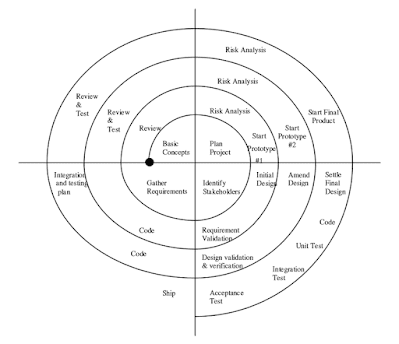Software Development Life Cycle
SOFTWARE DEVELOPMENT LIFE CYCLE
This software development life cycle most of used in software developing industry. Software development life cycle (SDLC) is a process used by the software industry to design , develop and test high quality software. The SDLC aim produce high-quality software that meets or exceeds customer expectations, reaches completion within times and cost estimates.
SDLC is a framework defining tasks performed at each step in the software development process.
- Requirement analysis
- Feasibility study
- Design
- Coding
- Testing
- Install deploy
- Maintain
- Requirement analysis
It is the most important phase in software development life cycle (SDLC) in which all the information is gathered from customers, Users and other stockholders. This stage gives a clear picture of the scope of the entire project and the anticipated issues, opportunities, and directives which triggered the project. Requirements gathering stage need teams to get detailed and precise project. This helps companies to finalize the necessary timeline to finish the work of that planed system.
2. Feasibility study
The main aim of feasibility study is to how to achieve this aim. In this phase a software requirements specification (SRS) document is made that includes everything which should be designed and developed during the project life cycle.
The various types of feasibility checks are :
Economical feasibility, Operational feasibility, Organizational feasibility, Technical feasibility, Schedule feasibility
is this main feasibility section that system checkers checked.
3. Design
SRS is the reference document used in this phase for the product to be developed. System and software design documents are prepared as per the specification document. Two kind of design document are prepared in this phase. High level design (HLD) Is the overall system design ,covering the details at macro level, Low level design(LLD) Is like detailing the HLD, a micro level design document.
4. Coding
In this phase, tasks are divided into the units or modules and it is assigned to the developer. And developers start building/writing the codes as per the chosen programing language. In this phase, Developer need to follow certain predefined coding guidelines. They also need to use programming tools like compiler,Interpreters, debugger to generate and implement the code.
5. Testing
This is done to verify that the entire application works according to the customer requirement. During this phase , QA and testing team may find some bugs/ defect which they communicate to developer. The development team fixes the bug and send back to QA for a re-test. This process continues until the software is bug - free, Stable, and working according to the business needs of that system.
6. Installation / Development
The main phase of deployment stage is to put the solution in the production environment. Sometimes product deployment happens in stages as per the business strategy of the company. The product must be tested in a real environment (user acceptance testing). The product first must be deployed in the staging environment and check for any deployment issues, and if there are no issues then code should be deployed to production environment for client feedback.
7. Maintenance
Once the system is deployed and customers start using the deployed system, Following 3 activities occur. it main Bug fix , System upgrade, Enhancement mean by adding some new features into the existing software. The main focus of this SDLC phase is to ensure that needs continue to be met and that the system continues to perform as per the specification mentioned in the first phase.
SDLC Models
The main software developers use that SDLC models system developed there model.
- Waterfall model
- Iterative model
- Spiral model
- V model
- Agile model
1. Waterfall model
1.clear requirements
2. Simple and easy understand
3.Nothing to overlap
4.Spent lot of time
5.Its usually used mini project
6.High developing risks.
2. Iterative model
1.System requiments clear and complete understood.
2.A new technology is being used and is being learnt by the development team while working on the project.
3.Resources with needed skill sets are not available and are planned to be used on contract basis for specific iterations.
3. Spiral model
1. Identify fast what is the risk and give fast recommendation.
2. Model used less time management.
3. Its may be need to develop step by step
4. Its not match large developed.
5. Additional functional can be add later.
4. V model
1.This is a highly-disciplined model and Phases are completed one at a time.
2.Works well for smaller projects where requirements are very well understood.
3.Simple and easy to understand and use.
4.Each phase has special review and deliverer process.
5. Agile model
1. Connected to everything step by step
2. Low of risks
3.Easy me sharable.
4.Is a very realistic software developing things.
5. Minimum rules and documentation easily.
6. Concurrent development and delivery withing overall context.
7. Gives a developer feasibility
That a main Software developing life cycle details..









Comments
Post a Comment